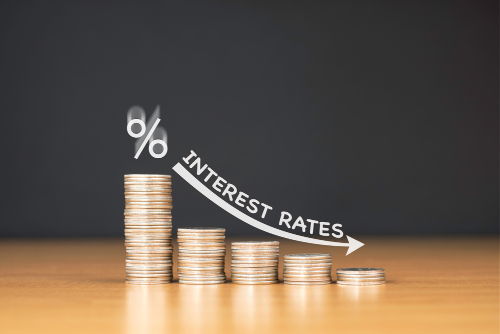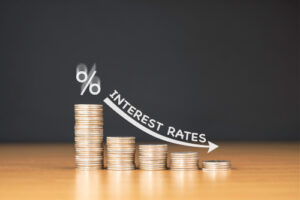Loan
affordable personal loans, APR comparison, bank loan comparison, best loan offers, borrowing tips, credit score loans, credit union loans, creditworthiness, debt consolidation loan, emergency loans, fast loan approval, financial planning, fixed rate loan, improve credit score, installment loan, interest rates, loan application tips, Loan Calculator, loan for bad credit, Loan Rates, loan term options, low interest loan, online loan approval, personal finance, Personal Loan, personal loan advice, refinance personal loan, secured loan, Unsecured Loan, variable rate loan
Admin
What’s a Good Personal Loan Rate for My Credit Score?
In today’s financial climate, personal loans remain a popular solution for consolidating debt, covering emergencies, or financing significant purchases. However, the interest rate attached to a personal loan can dramatically influence its affordability. One of the biggest factors determining your personal loan interest rate is your credit score. But what exactly is a “good” rate for your credit profile?
This article will explore the relationship between your credit score and personal loan rates, provide average APR ranges by credit category, discuss other influencing factors, and offer tips to help you secure the lowest rate possible.
Key Takeaways
- Your credit score is the primary factor in determining personal loan rates.
- Excellent credit (720+) can get you rates as low as 6%.
- Borrowers with poor credit may see rates exceeding 30%.
- Comparing lenders and improving your financial profile can yield better terms.
- Use online tools to estimate payments and pre-qualify without damaging your score.
- Even high-rate loans can be valuable in the right context, such as debt consolidation or emergencies.
What Is a Personal Loan Interest Rate?
A personal loan interest rate, also known as the Annual Percentage Rate (APR), represents the cost of borrowing money over a year. It includes both the interest charged and any applicable fees, giving borrowers a comprehensive picture of the loan’s true cost.
APR can be:
- Fixed: Remains the same for the life of the loan.
- Variable: May change based on market conditions.
Personal loan rates typically range between 6% and 36%, depending on several factors, the most crucial of which is your credit score.
How Credit Scores Affect Personal Loan Rates
Lenders use your credit score as a risk indicator. The higher your score, the more likely you are to repay the loan on time, resulting in a lower interest rate.
Here’s how credit scores are generally categorized:
- Excellent (720–850): Low risk; qualifies for best rates.
- Good (690–719): Moderate risk; good rates available.
- Fair (630–689): Higher risk; above-average rates.
- Poor (300–629): High risk; highest rates or denial likely.
The difference in rates between tiers can be substantial, potentially costing thousands over the life of a loan.
Other Factors That Influence Your Personal Loan Rate
While credit score is crucial, lenders evaluate a variety of factors:
- Income: Stable, higher income can lead to better rates.
- Debt-to-Income Ratio (DTI): Lower ratios suggest more room to repay.
- Employment Status: Full-time, long-term employment improves reliability.
- Loan Amount & Term: Larger or longer-term loans may attract higher rates.
- Lender Type: Banks, credit unions, and online lenders offer differing terms.
Some lenders offer pre-qualification tools that allow you to see estimated rates without a hard credit inquiry.
How to Get the Best Rate for Your Credit Score

Even within your credit tier, rates can vary. Here are strategies to land the best possible deal:
- Shop Around: Compare multiple lenders.
- Improve Your Credit: Pay down debts, make timely payments, correct errors.
- Consider a Co-Signer: A creditworthy co-signer can significantly lower your rate.
- Opt for Shorter Terms: Shorter loans often come with lower rates.
- Avoid Fees: Choose lenders with no origination or prepayment fees.
Tools to Compare Personal Loan Rates
Use online comparison platforms like NerdWallet, Bankrate, or LendingTree to:
- Check multiple offers at once
- Estimate monthly payments
- Read customer reviews
These tools help you make informed decisions and can even highlight lenders that specialize in borrowers with similar credit scores.
When Higher Rates Might Still Make Sense
In some situations, accepting a higher-rate loan may be justified:
- Debt Consolidation: Replacing high-interest credit cards with a fixed-rate loan.
- Medical Emergencies: When urgent care outweighs rate concerns.
- Short-Term Bridge: Temporary need with quick repayment planned.
The key is to ensure that the benefits (e.g., savings on credit card interest) outweigh the loan costs.
How to Qualify for the Lowest Personal Loan Interest Rates: Proven Strategies for Credit, Income, and Smart Borrowing
Overview: Focus on tactics to strengthen a borrower’s profile — such as improving credit, reducing debt-to-income ratio, and choosing the right lender.
Sections could include:
- What lenders look for
- How to raise your credit score fast
- Choosing secured vs. unsecured loans
- Timing your application
Fixed vs. Variable Personal Loan Rates: Which One Is Right for You?
Overview: A detailed comparison of fixed and variable rate loans, who each is best for, and how to evaluate long-term affordability.
Include: Case studies or rate simulations over 3–5 years.
Personal Loan vs. Credit Card: Which Has Better Interest Rates for Borrowing?
Overview: Compare average APRs, repayment flexibility, and ideal use cases.
Target Readers: People considering consolidating or funding a large expense.
What’s the Average Personal Loan Interest Rate in 2025?
Overview: Present data-driven trends, segmented by credit score, lender type, and loan amount.
Bonus: Include expert quotes or monthly updated rate charts.
How Personal Loan Rates Compare Between Online Lenders, Banks, and Credit Unions
Overview: Help readers choose the right financial institution.
Include: Pros and cons of each, rate transparency, ease of qualification, and service quality.
Should You Refinance Your Personal Loan? How to Lock in a Better Interest Rate
Overview: Explain when refinancing makes financial sense, what to watch out for, and how much borrowers can save.
Include: Realistic refinancing scenarios and a savings calculator.
How Debt-to-Income Ratio Affects Your Personal Loan Interest Rate
Overview: Explain this often-overlooked factor with sample DTI calculations and thresholds lenders use.
Personal Loan Rate Myths Busted: What Really Matters to Lenders

Overview: Clear up common misconceptions — like “you need a perfect score” or “online loans are scams.”
Emergency Loans vs. Traditional Personal Loans: Interest Rate Differences and Urgent Borrowing Tips
Overview: Focus on what rates to expect in emergencies and how to avoid predatory loans.
How to Use Prequalification to Compare Personal Loan Rates Without Hurting Your Credit
Overview: Show readers how to shop smart, use soft pulls, and negotiate better APRs.
Why Your Credit Report Errors Could Be Costing You Thousands in Personal Loan Interest
Overview: Explain how mistakes on credit reports can affect loan rates and approval.
Include: Step-by-step guide to checking, disputing, and correcting errors.
Is It Better to Take a Secured or Unsecured Personal Loan for Lower Rates?
Overview: Define secured vs. unsecured loans, interest rate implications, and risks.
Ideal For: Borrowers choosing between collateral-based and no-collateral loans.
How Loan Terms (Years) Affect Your Interest Rate and Total Cost
Overview: Compare 2-, 3-, and 5-year terms with rate examples and amortization tables.
Include: Tips for balancing monthly affordability vs. total cost.
Top 10 Lenders with the Best Personal Loan Interest Rates in 2025
Overview: List current top lenders (online, banks, and credit unions) with rate ranges, features, and borrower types.
Bonus: Monthly update potential for evergreen SEO traffic.
How to Use a Personal Loan to Improve Your Credit Score (and Get Better Future Rates)
Overview: Show how strategic borrowing and on-time repayment can lift your score and lead to lower future APRs.
The Personal Loan Application Process: From Prequalification to Disbursement
Overview: Walk readers through every step with tips to avoid surprises.
Include: Documentation needed and how to speed up approval.
Personal Loan Interest Rates by State: Why Geography Matters
Overview: Explore how location influences rates due to state regulations, cost of living, and local lender availability.
The Real Cost of Bad Credit Personal Loans: Are They Ever Worth It?
Overview: Candid discussion on loans with 25%+ APRs, when they might be justified, and better alternatives like credit counseling or peer-to-peer lending.
Can a Personal Loan Save You Money Compared to Payday or Title Loans
Overview: Compare APRs, terms, and risks of high-interest alternatives.
How Co-Signers Affect Personal Loan Rates (and What They Risk)
Overview: Explain when and why a co-signer is beneficial, how they lower rates, and what happens if the primary borrower defaults.
When Is the Best Time of Year to Get a Personal Loan at a Low Rate?
Overview: Explore rate trends across seasons, financial institution promotions, and how macroeconomic conditions affect APRs.
How Income Verification Impacts Your Personal Loan Offer and Rate
Overview: Dive into why lenders ask for proof of income and how it impacts the rate tier you fall into.
Personal Loans for Freelancers and Gig Workers: What Interest Rates to Expect

Overview: Help self-employed and gig economy borrowers navigate personal loans with tips to improve credibility and reduce rates.
Does Having a Bank Account with Your Lender Lower Your Personal Loan Rate?
Overview: Investigate relationship-based lending perks like loyalty rate discounts or automated payment reductions.
The Truth About “No Credit Check” Personal Loans: Hidden Interest Costs and Safer Alternatives
Overview: Cautionary guide on predatory lenders, ultra-high APRs, and how to safely borrow even with bad credit.
How to Qualify for the Lowest Personal Loan Interest Rates
Explore strategies to enhance creditworthiness:
- Steps to raise your credit score quickly (e.g., reducing credit utilization, disputing errors).
- How lenders assess debt-to-income ratio.
- The role of stable employment and income verification.
- Importance of consistent bill payment history.
Fixed vs. Variable Personal Loan Rates
Compare these rate types to help readers choose the right fit:
- Definition and structure of fixed and variable APRs.
- Pros and cons of each option depending on market trends.
- Risk factors of variable-rate loans in a rising-rate economy.
- When to lock in a fixed rate for long-term stability.
Personal Loan vs. Credit Card: What’s Better for Large Purchases?
Analyze the differences between financing tools:
- APR comparison: credit card vs. personal loan.
- Fixed vs. revolving credit pros/cons.
- Impact on credit score and utilization.
- Ideal use cases for each product.
Top Personal Loan Lenders in 2025
An up-to-date comparison guide including:
- Lenders offering best APRs by credit tier.
- Key perks (no fees, flexible terms, mobile access).
- Application process reviews and approval speed.
- Customer satisfaction or Trustpilot scores.
Refinancing Personal Loans: When and How?
Explain how refinancing can lead to better terms:
- What refinancing means in the personal loan context.
- When it makes financial sense (rate drop, credit improvement).
- How to compare refinancing offers and calculate potential savings.
- Pitfalls to avoid (fees, penalties, longer repayment).
Secured vs. Unsecured Personal Loans
Help readers understand their borrowing options:
- Differences in loan structure and approval criteria.
- Examples of collateral used in secured loans.
- Risks (e.g., asset seizure) vs. potential benefits (lower rates).
- When to choose one over the other based on borrower profile.
Impact of Debt-to-Income Ratio on Loan Approval
Break down this crucial lending metric:
- How DTI is calculated and interpreted.
- Ideal DTI for personal loan approval (typically < 35%).
- Ways to reduce DTI quickly (increase income, pay down debt).
- Why lenders care more about DTI than total income.
How Personal Loans Affect Your Credit Score
Provide transparency on credit impact:
- Short-term effects (hard inquiry, new account).
- Long-term benefits (credit mix, on-time payments).
- Dangers of missed payments or default.
- How to use personal loans to build credit strategically.
Online Lenders vs. Traditional Banks
Compare the experience, rates, and accessibility:
- Approval speed and automation from fintechs.
- In-person service and existing relationships with banks.
- Which option is better for fair/poor credit borrowers.
- Loan customization and customer support pros/cons.
How Income and Employment Stability Influence Your Loan Rates
Highlight non-credit factors that matter:
- Why lenders ask for W-2s, pay stubs, or tax returns.
- How job history affects perceived borrower Reliability
- Self-employed income challenges and documentation tips.
- Why full-time employment often means better terms.
Also read : Top Things To Know Before Applying For A Secure Loan
Conclusion
Understanding what constitutes a good personal loan rate for your credit score can help you make financially sound decisions. While your credit score is a major determining factor, it’s not the only one. By improving your financial profile, comparing offers, and leveraging pre-qualification tools, you can find the most affordable personal loan for your situation.
Don’t rush the process. A few points in interest rate reduction could save you hundreds or even thousands of dollars over time.
FAQs
What is considered a good APR for a personal loan? A good APR typically ranges from 6% to 10%, usually available to borrowers with excellent credit (720+).
Can I get a personal loan with a credit score below 600? Yes, but expect rates in the 25–36% range. Consider alternatives like credit unions or secured loans.
Do personal loan rates vary by lender? Absolutely. Banks, online lenders, and credit unions all offer different rates and terms.
Will applying for a personal loan hurt my credit? Pre-qualification doesn’t affect your score, but a formal application will trigger a hard inquiry, which may slightly lower your score.
How can I estimate my loan payments? Use online loan calculators. Input amount, rate, and term to get an estimate.
Are online personal loans safe? Yes, as long as you use reputable lenders. Check for encryption, privacy policies, and customer reviews.
Can I refinance a personal loan for a lower rate? Yes, refinancing is an option if your credit score improves or market rates drop.













